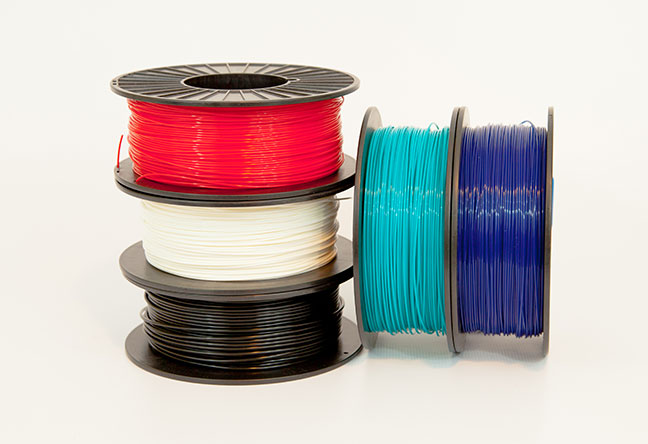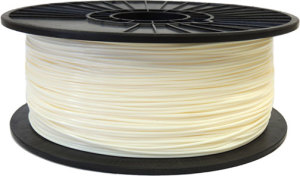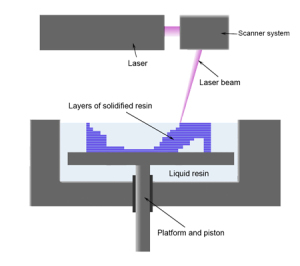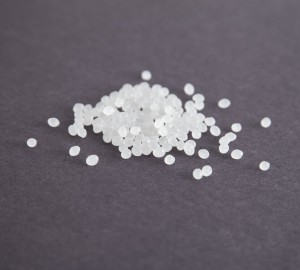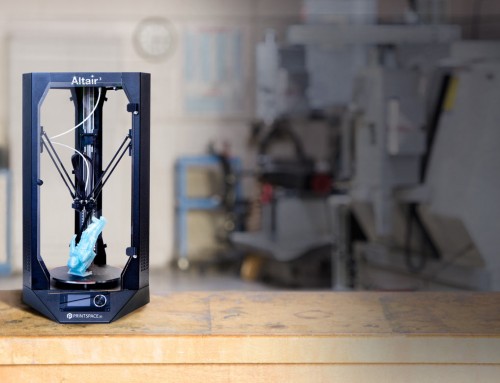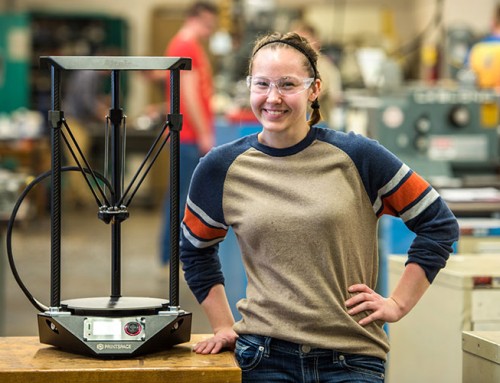When it comes to consumer printers, there are two major technologies that drive the printing process: stereolithography (SLA) and fused deposition modeling (FDM, also known as fused filament fabrication, or FFF). Both methods deposit polymers in two significantly different ways: SLA uses a photosensitive resin which “cures” when exposed to light (usually ultraviolet), while FDM heats a filament made of thermoplastic resin up above its glass point and extrudes it onto a build surface. Although the end results are very similar, there are significant differences in the properties, handling, and use of resin versus filament.
What is Filament?
The composition of filament is the simpler of the two. It’s typically just the thermoplastic polymer (ABS, PLA, nylon, etc.) that has been heated to it’s glass point and extruded into a thin, uniform line of material. Thermosetting plastics can not be used, as they cure in the heat, and can’t be extruded. They are typically spooled. The glass point is an important temperature when dealing with filament, as it is the temperature where the material is soft enough to be extruded, but not quite a liquid. Uniformity is also key, as any width abnormalities can affect the printing process, potentially ruining prints as it is re-extruded onto the print bed when used.
Filament tends to be very easy to use. It’s as safe to handle as the final product, and the only things you need to worry about are the heat from the extruder nozzle and the potential for fumes from the heated material. These are mitigated by making sure that adequate ventilation is in place based on what specific material you are using to print.
What is Photosensitive Resin?
Photosensitive resin is a bit more complex. Although filament is technically also a form of resin, it is the sensitivity to light that makes this work. It’s a binding agent (such as the polymer you want to print in), mixed with monomers and photoinitiators. The monomers affect the viscosity of the photosensitive resin itself, while the photoinitiators cause the resin to cure in light. When the photosensitive resin is cured, the monomers and binding agents form longer molecules, chaining together and cross-linking. They react until light exposure is halted or all of the constituent chemicals have reacted to form the final hardened resin.
Resin has some additional safety concerns that filament does not. First, gloves and safety glasses are a must. Many times resins will mention “VOCs” in their specs. VOCs are volatile organic components, meaning they are potentially toxic organic compounds used as the monomers and photoinitiators. These compounds necessitate ventilation (more so than outgassing from filament) and that skin contact be avoided. Until a print has fully cured, these have to be considered while handling the print and printer.
Which 3D Printing Materials Should I Use?
The simple answer is that you use the one that your printer is designed for. A 3D printer is designed for a specific technology, and that dictates what material can be used in the printing process. If you’re still weighing options for what to buy, consider the fact that resin based printers are limited in respect to the number of materials that can be used (while filament fed printers are moving in the direction of multiple extruders being the norm, each printing in a different material during the course of a print). It’s also harder to produce your own materials with resin based printer material, due to the chemistry involved. As discussed in previous articles, there are simple filament extruder systems available which make getting into this fairly easy, allowing you to potentially harvest material from a variety of sources. Besides making your own, filament generally tends to be less expensive. This has the potential to be a major savings.
It’s good to understand what you’re working with before you start a project. Whether you use an FDM or SLA printer at home, know a little bit about the magic that goes into it so that prints can come out.
